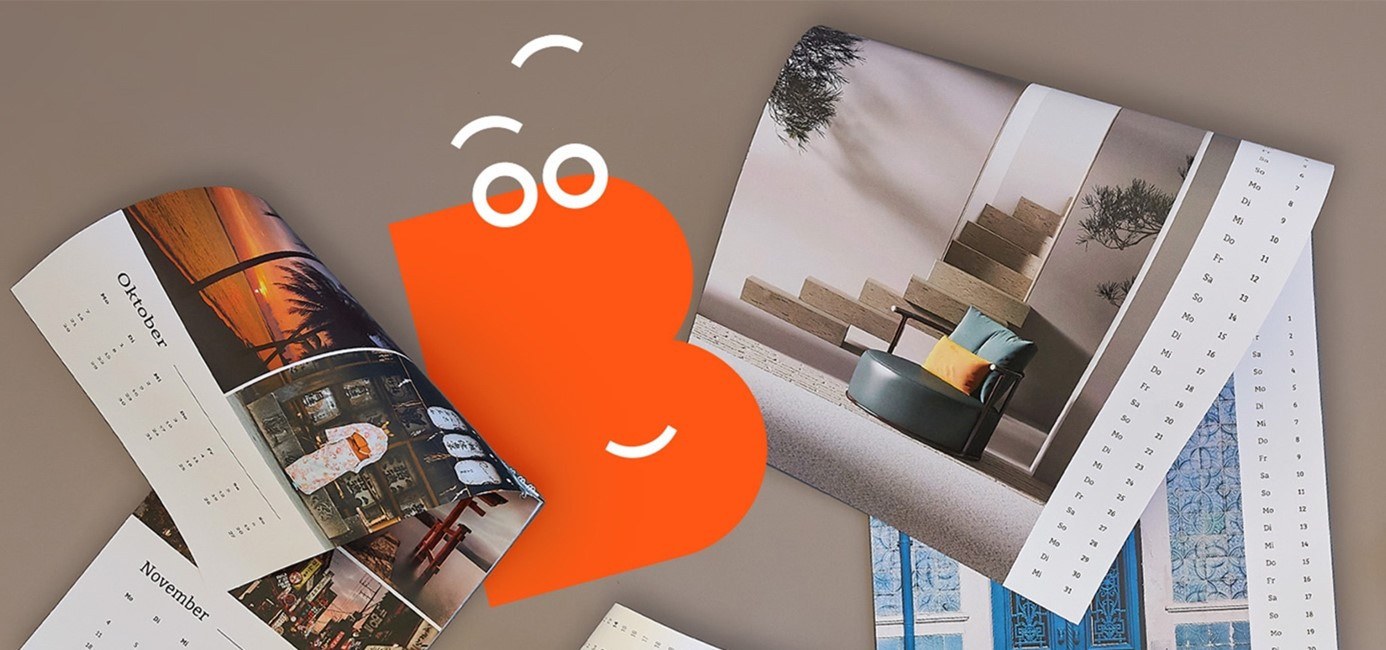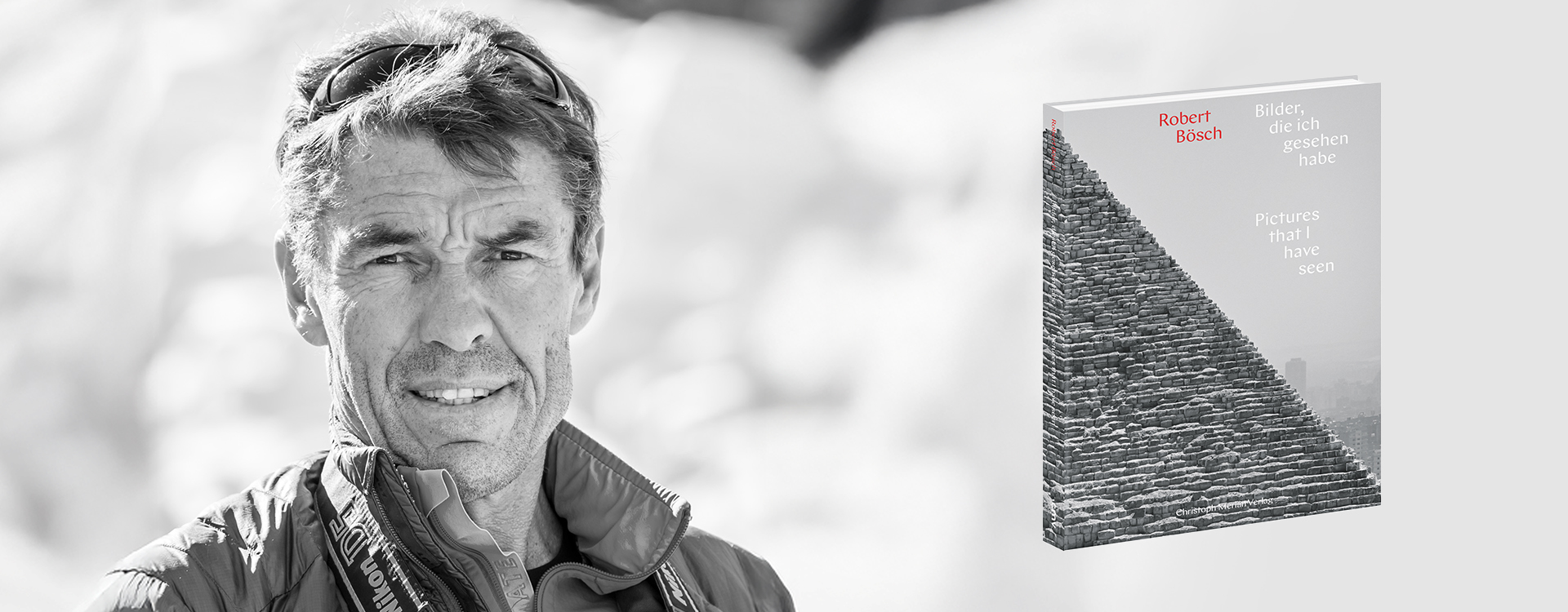Have you ever wondered which calendar would be best suited to your photos? With all the different formats, designs and themes to choose from, the selection is huge – and the decision can be difficult. I would therefore like to share a few design tips for photo calendars with you, so that you can design the perfect photo calendar f
Product selection
There are different types of calendars. Various criteria can be decisive when choosing the right calendar for your Photos.
Should the calendar be functional, for example, with a large calendar area for noting important events? Tip: the Monthly Wall calendar in portrait format A3 has an extra-large calendar area for notes.
Should it be possible to enter appointments and tasks in order to plan the year perfectly? Tip: the Family Wall calendar is perfect for planning family life. You can use up to six columns to enter appointments and tasks for each family member.
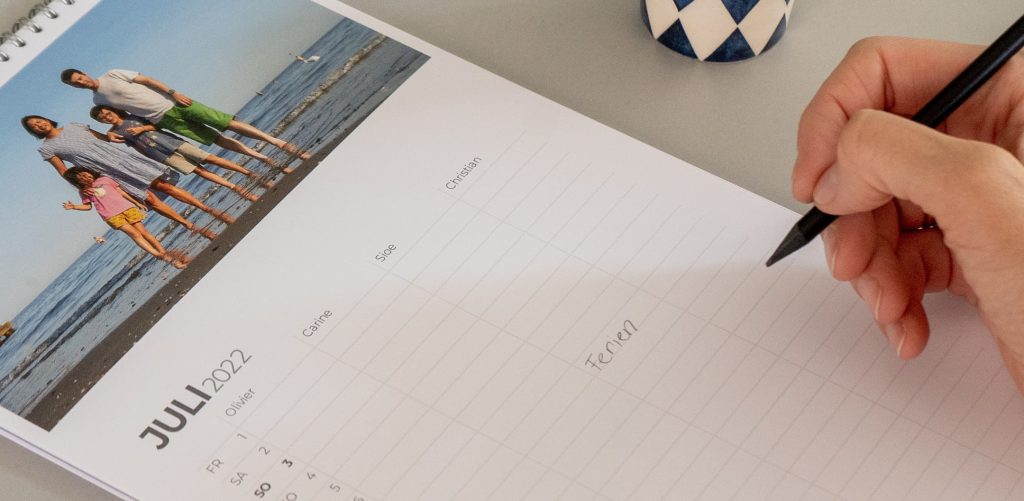
Do you want the calendar to make a strong visual impression and show off your photos to their best advantage? Tip: the classic Photo calendars, Premium wall calendars and Photographic wall calendars in large formats are perfect for showing off your best photos to their best advantage. These are available in portrait or landscape format up to A2 size, or in a square format.
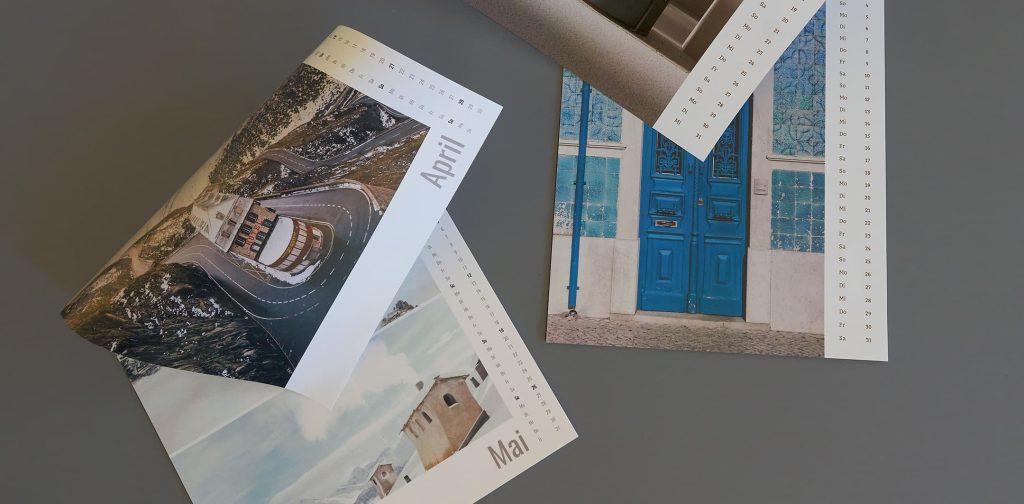
Where will the calendar be displayed? Is there a suitable room and a suitable place to hang the calendar? Or should the calendar be displayed as decoration? Tip: the Desk calendars Oak or Walnut can be displayed using the nickel-plated stand. The clipboard can also be attached to the wall using the hanging loop. This turns the wooden stand into a versatile photo display.
The right format
When choosing the right format, it is not only the available space that is important. Depending on the type of Photos, certain formats are particularly suitable.
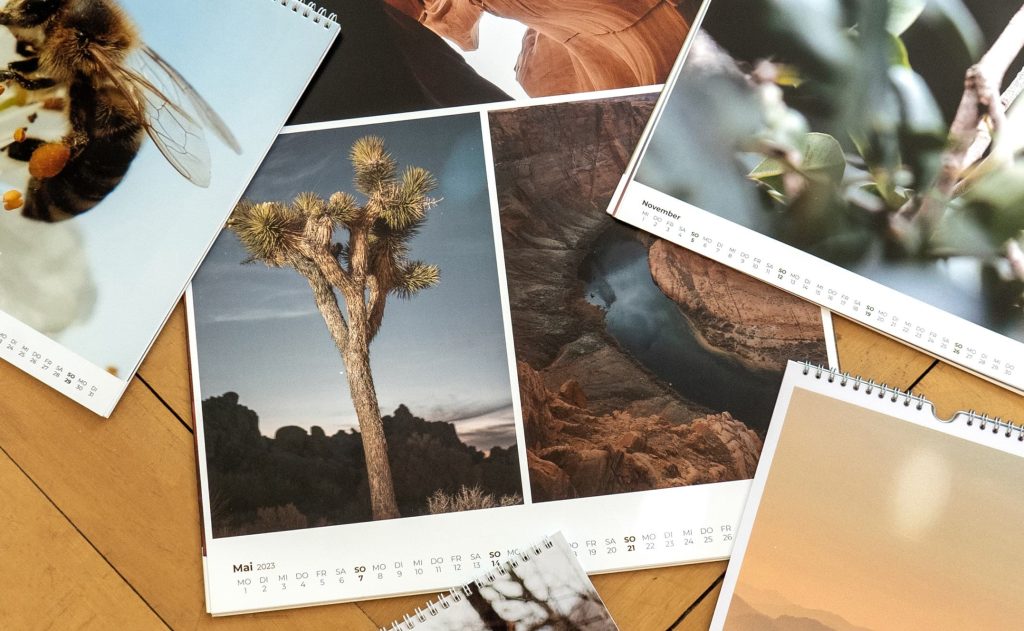
Landscape format
The landscape format is particularly suitable for photos that capture a wide scene or horizontal subjects. Here are some examples where the landscape format is ideal:
- Landscape shots: Wide landscapes, sunsets or panoramas can be displayed particularly impressively in landscape format, as it emphasises the width of the scene.
- Architecture: Buildings, bridges or city skylines are better shown off in landscape format, as the width of the subject is often emphasised.
- Travel photos: If you want to capture a wide road, an ocean or an interesting city scene, landscape format is a good choice. It is also suitable for underwater shots and for capturing the movement of marine life in its natural environment.
- Animals or vehicles in motion: If you are photographing animals in their natural habitat, such as birds in flight or galloping horses, landscape format offers enough space to capture the movement and give the subject more ‘air’. If you are photographing cars, boats or planes, landscape format is an ideal way to show the entire vehicle and its surroundings.
Portrait format:
Portrait mode is for photos that focus on vertical subjects or emphasise height. Some typical uses for portrait mode are:
- Portraits: Single portraits or full-length shots of people look more natural in portrait format, as this format emphasises the length of the body.
- Architecture: tall buildings, towers or other vertical structures look better in portrait format because it emphasises the height of the subject.
- Nature photography: tall trees, waterfalls or mountains, which have a strong vertical dimension, can be captured perfectly in portrait format.
- Close-ups: when you’re photographing details such as flowers, sculptures or other narrow, long objects, portrait format provides a natural framing.
Square
The square format is suitable for photos that are available in both portrait and landscape format, whereby the best section is then selected in each case. This achieves a symmetrical and balanced composition. Photos that work well in the square format include:
- Portraits: The square format can give portraits a modern and focused look, as it emphasises the subject centrally and minimises distractions around the edges.
- Close-ups: For macro and close-up shots of objects such as flowers, jewellery or other small details, the square format is ideal for drawing attention to the subject.
- Artistic photography: Photos in which a creative and minimalist composition is important benefit from the symmetry of the square format.
- Still life photography: Objects that are arranged symmetrically or centrally in the image, as in still life photography, are optimally presented in the square format.
Subject
When selecting Photos for a Calendar, it can be helpful to decide on a theme. This theme can be supported by a variety of design options. From the choice of layout, to the use of colours and fonts.
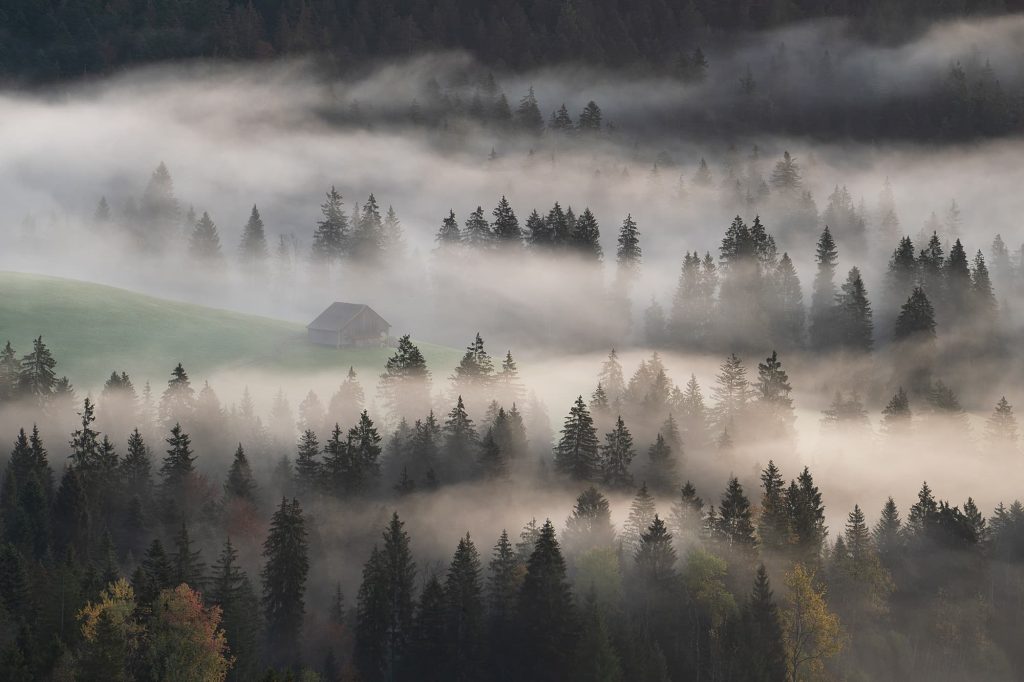
Here are some popular themes that are particularly suitable for photo calendars:
- Family and friends: Pictures of family members, friends and special moments together, such as birthdays, holidays or vacations.
- Travel: Photos from past trips, exotic places or cities. Ideal for landscapes, cityscapes and cultural experiences.
- Nature and landscapes: Pictures of breathtaking landscapes, such as mountains, forests, beaches and lakes. Seasonal themes are also popular, such as spring flowers, autumn leaves or winter landscapes.
- Pets: Photos of beloved pets, which provide joy throughout the year, are perfect for a personalised photo calendar.
- Annual review: A compilation of the best moments of the past year – a great way to capture the most important events.
- Weddings and anniversaries: A calendar that immortalises the most beautiful moments of a wedding or anniversary. Also ideal as a gift for the couple.
- Children and babies: Capture the development of babies or children over the course of a year, with monthly photos documenting the changes and special moments.
- Artistic photography: Black and white photographs, creative compositions or macro shots of objects or structures for an aesthetic calendar project.
- Sports and hobbies: Pictures of sporting activities or other hobbies such as hiking, cycling or sailing. Also ideal for clubs and teams.
- Flowers and plants: Floral motifs, garden photos or detailed macro shots of plants and flowers that bloom throughout the year.
- Events and celebrations: Photos of special events such as birthdays, parties or other celebrations.
Design
The online editor offers you a variety of layouts. These templates already have the colours, fonts and illustrations defined and in place. This makes creating a photo calendar quick and easy. Of course, these layouts can also be customised to your own preferences. Or you can choose the ‘Design yourself’ template and create a layout based on your own ideas.
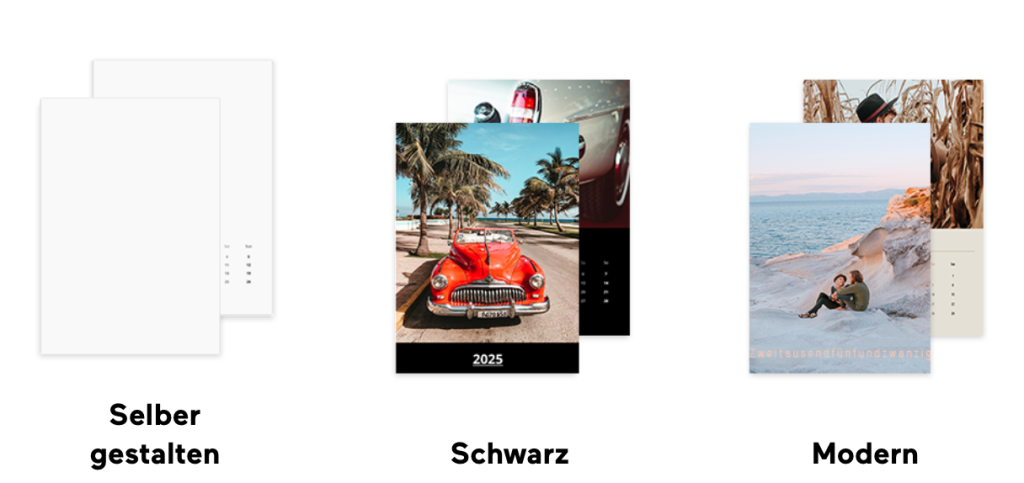
The layout can be chosen based on the number of photos available. Multiple photos can be placed on a calendar page to show a scene or an experience from different angles.
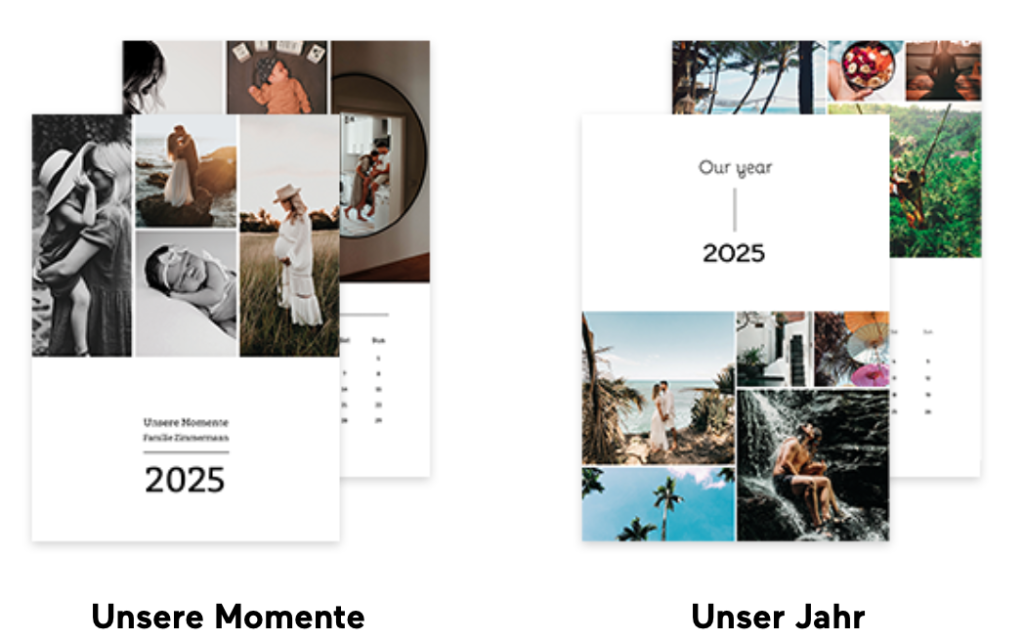
A minimalist design with clean lines, little text and a reduced colour palette gives a modern look.

The calendar can be personalised even further with additional individual details and creative elements. Add texts with quotes or sayings or write down personal memories and experiences related to the Photos in text form. This gives each month a special meaning and adds emotional value to the calendar.
Use colours to highlight certain dates of individual appointments and events.
Colours
Most importantly, the colours should suit you and your personal style or the chosen theme of the calendar.
Colours can trigger different emotions. Use this knowledge to create the desired mood. Take into account seasonality to reflect the time of year or the specific month. Both a harmonious colour palette and the use of contrasting colours can be useful.
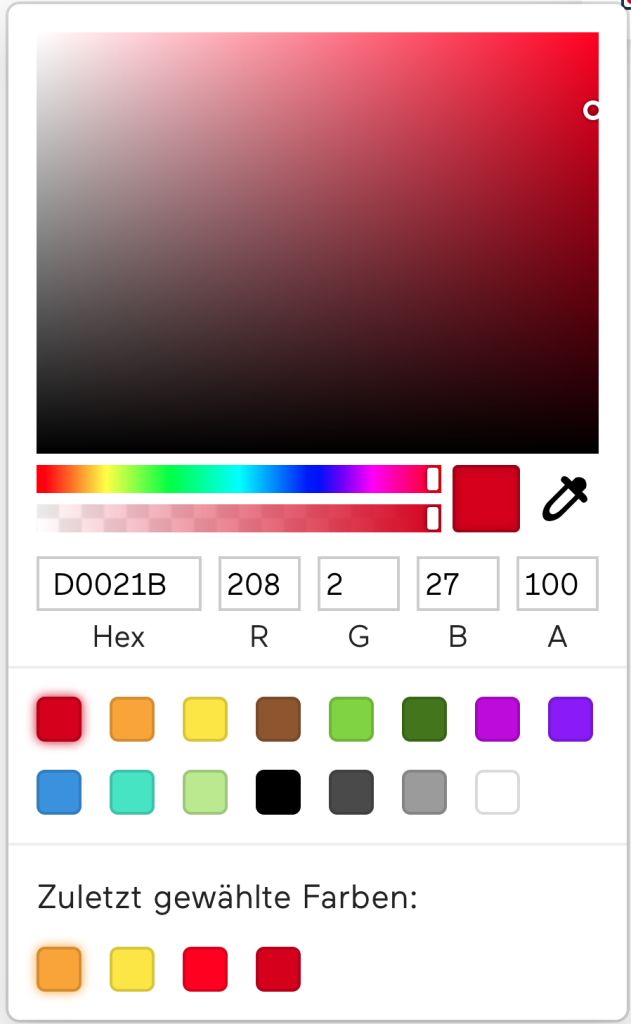
Seasonal colour palettes and contrasting colours:
Spring:
- Colours: pastel shades such as pink, purple, light blue, yellow,
- contrasting colours: green, turquoise
Summer:
- Colours: bright yellow, orange, red, turquoise
- Contrasting colours: blue, purple
Autumn:
- Colours: red, orange, yellow, brown
- contrasting colours: green, turquoise
Winter:
- Colours: white, grey, blue
- contrasting colours: red, orange
Monthly colour themes:
- January: white, grey, blue (for the cold season)
- February: red, pink (for love and Valentine’s Day)
- March: green, yellow (for spring)
- April: pastel colours (for flowers and nature)
- May: green, yellow, blue (for the sky and nature)
- June: yellow, orange, red (for the sun and warmth)
- July: turquoise, blue (for the sea and the sky)
- August: yellow, orange, red (for the heat)
- September: red, orange, yellow (for late summer)
- October: brown, orange, yellow (for the autumn leaves)
- November: grey, blue, white (for the fog and the first snow)
- December: red, green, white (for Christmas)
I hope I was able to help you with my design tips for photo calendars and I hope you have fun trying them out!

Reto Kuhn, Product Owner

